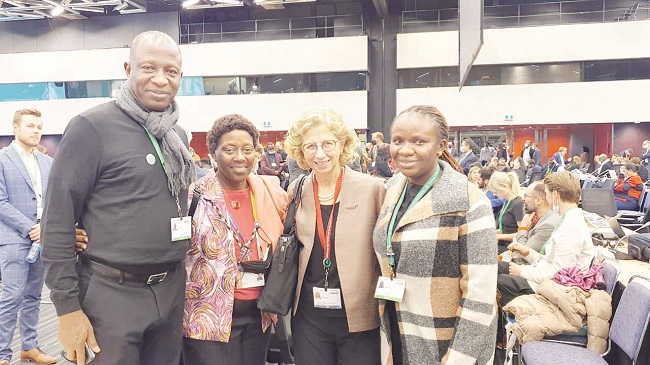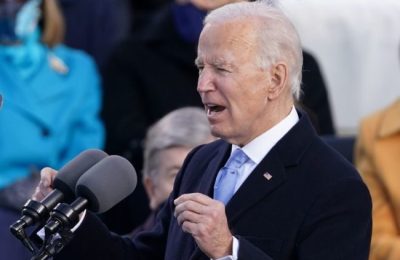
The United Nations Biodiversity Conference (COP15) ended in Montreal, Canada, about a fortnight ago on December 19, 2022 with a landmark agreement to guide global action on nature up till 2030. The conference involved representatives from 188 governments, including Nigeria, that were in Montreal for two weeks that the summit lasted. As it was with the United Nations Climate Change Conference (COP27) in November 2022, finance was also a sticking issue at COP15. Fortunately, nations were able to agree on a framework that addresses finances. However, the question of whether financing will be up to scale remains.
Chaired by China and hosted by Canada, COP15 resulted in the adoption of the Kunming-Montreal Global Biodiversity Framework (GBF) on the last day of negotiations. According to the United Nations Environment Programme (UNEP) in a statement on its website, the GBF aims to address biodiversity loss, restore ecosystems and protect indigenous rights. The plan includes concrete measures to halt and reverse nature loss, including putting 30 per cent of the planet and 30 per cent of degraded ecosystems under protection by 2030. It also contains proposals to increase finance to developing countries – a major sticking point during talks.
The stakes could not be higher: the planet is experiencing a dangerous decline in nature as a result of human activity. It is experiencing its largest loss of life since the dinosaurs. One million plant and animal species are now threatened with extinction, many within decades.

About the Global Biodiversity Framework
UNEP describes the GBF as consisting of four overarching global goals to protect nature, including: halting human-induced extinction of threatened species and reducing the rate of extinction of all species tenfold by 2050; sustainable use and management of biodiversity to ensure that nature’s contributions to people are valued, maintained and enhanced; fair sharing of the benefits from the utilisation of genetic resources, and digital sequence information on genetic resources; and that adequate means of implementing the GBF be accessible to all parties, particularly least developed countries and small island developing states.

United Nations Environment Program (UNEP) Executive Director, Inger Andersen, emphasized that implementation is now key: “Success will be measured by our rapid and consistent progress in implementing what we have agreed to. The entire UN system is geared to support its implementation so we can truly make peace with nature.”
The GBF also features 23 targets to achieve by 2030, including: effective conservation and management of at least 30 per cent of the world’s land, coastal areas and oceans. Currently, 17 per cent of land and 8 per cent of marine areas are under protection; restoration of 30 per cent of terrestrial and marine ecosystems; reduce to near zero the loss of areas of high biodiversity importance and high ecological integrity; halving global food waste; phasing out or reforming subsidies that harm biodiversity by at least $500 billion per year, while scaling up positive incentives for biodiversity conservation and sustainable use; mobilising at least $200 billion per year from public and private sources for biodiversity-related funding; raising international financial flows from developed to developing countries to at least US$ 30 billion per year; requiring transnational companies and financial institutions to monitor, assess, and transparently disclose risks and impacts on biodiversity through their operations, portfolios, supply and value chains.
Financial issues
Finance played a key role at COP15, the UNEP statement noted, with discussions centering on how much money developed countries will send to developing countries to address biodiversity loss. It was requested that the Global Environment Facility set up a Special Trust Fund – the GBF Fund – to support the implementation of the GBF, in order to ensure adequate, predictable and timely flow of funds.
Countries also approved a series of related agreements to implement the GBF, including on planning, monitoring, reporting and review, which are all vital to ensure progress is made – in the words of the GBF, to ensure that there is not “a further acceleration in the global rate of species extinction, which is already at least tens to hundreds of times higher than it has averaged over the past 10 million years.”
‘Aligning financial flows for an ecological civilisation’
Still on financial issues, at the biodiversity summit, Nigeria’s Minister of Environment, Mohammed Abdullahi, presented a paper, titled ‘Aligning the financial flows for an ecological civilization – how to speed up the momentum’ at the World Wildlife Fund (WWF) side event. He was represented by the director-general of the Forestry Research Institute of Nigeria (FRIN), Professor Adeshola Adepoju.
He noted that the humanity’s increased dependence on “finite natural resources, and dramatic impact of climate change has resulted in lopsided imbalance between economic development and environmental sustainability.
“We have created a world of complex problems that goes beyond simple solutions.
“Increased rate of biodiversity loss and other planetary crises are endangering global economies, and the financial sector, significantly exposed to nature, has a key role to play in transforming the present financial system, especially in aligning financial flows for a nature-positive world.”
As UNEP noted in its statement concerning finance, the minister stated that: “issues bordering on finance have always been the big elephant in the room in most of the conventions. Negotiation talks have always been galvanized around increased financial support with improvements in the predictability, transparency, comprehensiveness and accessibility of its distribution. Unfortunately, the present status of biodiversity finance and institutional mechanisms for valuing and investing in biodiversity have not yet reached the expected scale.
How biodiversity projects can be financed to scale
Minister Abdullahi stated that if the public sector can provide the enabling environment through the necessary regulatory and policy frameworks, the gap in biodiversity financing can be closed.
He stated: “A composite set of solutions involving different players are needed in mobilizing financial resources at scale for biodiversity.
“While all sectoral entities with capacity to provide international public finance, particularly the private and financial sectors, have a role to play in galvanizing support for actions in developing countries to achieve global targets, the public sector, must take the bull by the horns by providing the enabling environment with necessary regulatory and policy frameworks, scaling up nature-positive incentives,providing data and concessional finance, creating investment opportunities, ending, reviewing or redirecting all national subsidies that are harmful to biodiversity, facilitating alignment of financial flows and strengthening synergies to address the triple planetary crises of biodiversity loss, climate change and pollution.
“This will go a long way in closing the biodiversity finance gap by reducing the pressure on biodiversity and consequently reducing the required financing to protect, conserve and restore.”
He added that “governments need to work with the private sector to better align private financial flows towards transforming economies to become resilient, climate-neutral, nature-positive and less polluting.
“For instance, in Nigeria, the tree planting initiative funded through National Appropriation, Sovereign Green Bond, and Private Sector has resulted in the successful afforestation, reforestation and restoration of degraded lands, vulnerable sites and landscapes with over 20 million trees species and distribution of over 6,550,056 tree seedlings to sub-national governments and institutions.
“The crux of the whole issue is realigning investments aimed at directing financial flows away from projects with negative impacts on biodiversity and ecosystem services to projects that mitigate negative impacts or pursue positive environmental impacts as a co-benefit.
“In engaging positively with nature, financial institutions can collaborate and join initiatives in favour of biodiversity, adapt their investment strategies and engage with companies, assess their risks, impacts and dependencies, and set targets in line with global goals and the post-2020 Global Biodiversity Framework, among others.”








